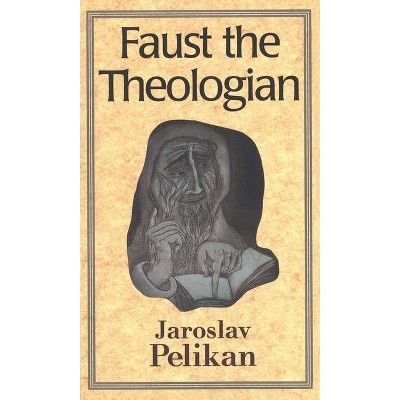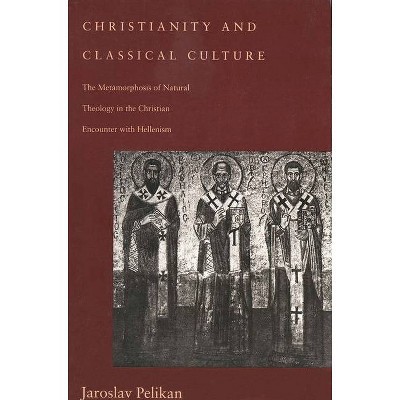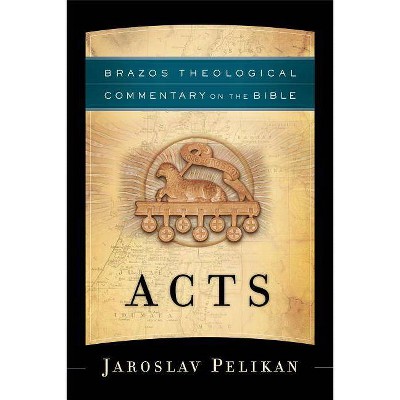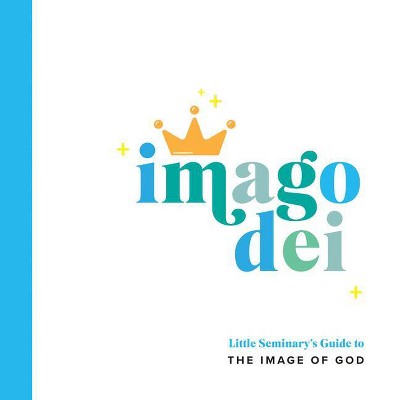Imago Dei - by Jaroslav Pelikan (Paperback)
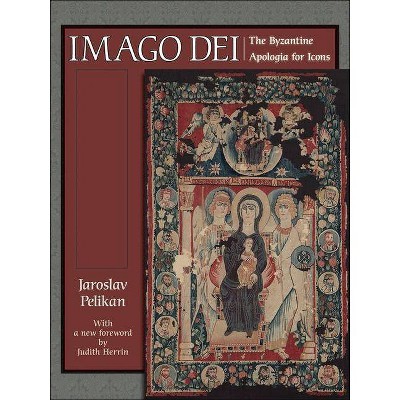
Similar Products
Products of same category from the store
AllProduct info
<p/><br></br><p><b> About the Book </b></p></br></br>His A.W. Mellon lectures in the Fine Arts, delivered in 1987.<p/><br></br><p><b> Book Synopsis </b></p></br></br><p>In 726 the Byzantine emperor, Leo III, issued an edict that all religious images in the empire were to be destroyed, a directive that was later endorsed by a synod of the Church in 753 under his son, Constantine V. If the policy of Iconoclasm had succeeded, the entire history of Christian art--and of the Christian church, at least in the East--would have been altered. <p/>Iconoclasm was defeated--by Byzantine politics, by popular revolts, by monastic piety, and, most fundamentally of all, by theology, just as it had been theology that the opponents of images had used to justify their actions. Analyzing an intriguing chapter in the history of ideas, the renowned scholar Jaroslav Pelikan shows how a faith that began by attacking the worship of images ended first in permitting and then in commanding it. <p/>Pelikan charts the theological defense of icons during the Iconoclastic controversies of the eighth and ninth centuries, whose high point came in A.D. 787, when the Second Council of Nicaea restored the cult of images in the church. He demonstrates how the dogmas of the Trinity and the Incarnation eventually provided the basic rationale for images: because the invisible God had become human and therefore personally visible in Jesus Christ, it became permissible to make images of that Image. And because not only the human nature of Christ, but that of his Mother had been transformed by the Incarnation, she, too, could be iconized, together with all the other saints and angels. <p/>The iconographic text of the book is provided by one of the very few surviving icons from the period before Iconoclasm, the Egyptian tapestry Icon of the Virgin now in the Cleveland Museum of Art. Other icons serve to illustrate the theological argument, just as the theological argument serves to explain the icons. <p/> In a new foreword, Judith Herrin discusses the enduring importance of the book, provides a brief biography of Pelikan, and discusses how later scholars have built on his work.</p><p/><br></br><p><b> Review Quotes </b></p></br></br><br>[L]ucid, crisp, inclusive, comprehensive, and articulate.<b>---Daniel J. Sahas, <i>History of Christianity</i></b><br><br>[Pelikan's] extraordinary breadth as a historian, not to mention his mastery of the Christian theological traditions, enables him to establish a proper context and a necessary rhetoric for the exploration of Byzantine icons.<b>---John Wesley Cook, <i>Theology Today</i></b><br><br>[T]his book is genuine cause for celebration. I look forward to recommending it heartily to students and colleagues alike.<b>---Alexander Golitzin, <i>Patristics</i></b><br><br>Pelikan clearly delineates the path the theological defense of icons took during the iconoclastic controversies of the eighth and ninth centuries ... Commendably Pelikan addresses the role played by the other senses in the defense of icons. The fact that touch, taste, audition and smell were acceptable made it easier to argue for the place of the visual.-- "Theological Studies"<br><br>The book is beautifully produced and lavishly illustrated. Instructive and pleasing, Imago Dei repays both close reading and close viewing.-- "Cross Currents"<br><p/><br></br><p><b> About the Author </b></p></br></br><b>Jaroslav Pelikan</b> (1923-2006) was the author of more than thirty books, including the five-volume <i>Christian Tradition: A History of the Development of Doctrine</i>. In 2004, he received the John W. Kluge Prize for Lifetime Achievement in the Human Sciences.
Price History
Price Archive shows prices from various stores, lets you see history and find the cheapest. There is no actual sale on the website. For all support, inquiry and suggestion messages communication@pricearchive.us
